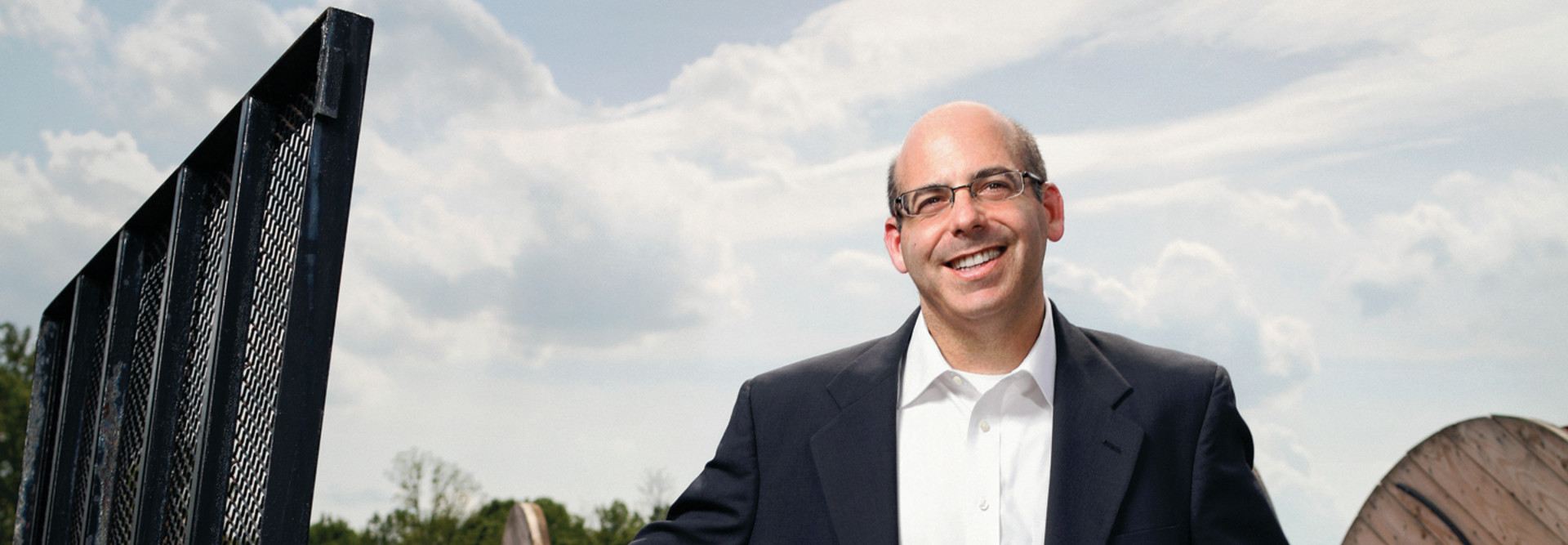Howard County Leads Maryland's Statewide Broadband Deployment
When Ira Levy sat on a transition team for the newly elected county executive of Howard County, Md., he noticed several IT opportunities that weren't being taken advantage of. That insight landed him the job of moving technology forward in the county.
Since joining Howard County at the end of 2006, Levy has shifted the view of IT from a cost center to an efficiency enhancer. He spoke with StateTech Managing Editor Amy Schurr about the county's IT transformation and his stewardship of Maryland's new statewide broadband network.
StateTech: What kind of IT environment did you first encounter?
LEVY: Howard County had grown from being somewhat rural to a suburban hub, so we had to take a lot of the systems that were mom-and-pop-oriented and change them over to the enterprise. We had to articulate the message of why it was important to spend in this way, so that was a huge initial challenge. And we had to get the staff prepared to work with new technology that they didn't have prior experience with.
StateTech: What kind of technologies did you deploy?
LEVY: We started by installing a help desk system and centralizing email. There was a lack of security systems such as firewalls and patch management. We had to move forward with consolidated storage and servers and build out the data center in an appropriate way. And networking was the other piece we needed to upgrade.
Once you have the infrastructure in place, you can put in new applications. We rolled out SAP, implemented Cognos for business intelligence, analytics and budgeting and upgraded the public-safety systems.
StateTech: How did you modify the data center?
LEVY: We were probably taking up close to 10,000 to 12,000 square feet and consolidated into a 3,000-square-foot area. About 95 percent of our servers are virtualized. We've created our own cloud environment to have truly elastic resources. As we need to expand storage or compute power, it can happen on the fly.
StateTech: Describe your virtual desktop environment.
LEVY: We are finishing our first VMware View pilot, which was rolled out to 100 people, then another 1,000 over the following couple of months.
We want to offer more services, more applications and variety to the user. If I can put a piece of technology in your hands that you like, the more you're going to adopt it and take care of it. To do that, you need to contain the cost of supporting all of the new types of operating systems and applications and devices. The virtual desktop is one of the big steps we're taking to contain the cost and offer more variety to users.
StateTech: Does the county have a bring-your-own-device policy?
LEVY: We used to hand out BlackBerrys as needed and paid significantly, particularly for overage charges. We changed that over to BYOD and everyone gets a stipend. Now we pay about the same amount that we did before for 100 phones, but have more than 1,000 devices connected.
StateTech: How do you support a range of virtual desktops on a variety of devices?
LEVY: We leverage VMware Horizon AppManager, which works like an app store. When a user begins, they can go get the applications they need when they need them. That puts the user in control of getting the applications instead of having to call the IT department to install them. It minimizes the amount of time it takes to get somebody effectively working.
By the Numbers
The One Maryland Broadband Network already connects as many as 1,000 community anchor institutions, including:
450 K–12 Schools
200 Government Facilities
40 Libraries
15 Community Colleges
6 Other Institutions of Higher Learning
2 Healthcare Providers
StateTech: What size staff do you manage?
LEVY: We have about 100, give or take. At times, we hire contingent employees if there's a big project going on. We contract and expand as necessary.
StateTech: Tell us about the statewide dense wavelength division multiplexing network.
LEVY: The broadband project initially began as a public-safety project to look at the different communication assets in the area. I was looking to build a network in Howard County and noticed that other jurisdictions were already doing that. But there was no real collaboration. None of us had gotten together to say, 'If we build an extra mile and a half here, we can connect and share resources, applications and services and do things together more effectively.' After the assessment took place, the stimulus bill came out and we noticed there were funds for broadband projects.
StateTech: How did the group obtain a Broadband Technology Opportunities Program grant?
LEVY: We assembled a consortium of 10 jurisdictions in central Maryland, then reached out to the state. Howard County took the lead, and our state was granted $115 million. We're also leveraging existing assets to tie them into one significant network. The project encompasses about 1,000 new miles of fiber throughout the state and connects 1,000 new anchor institutions.
StateTech: What's the status of the broadband deployment?
LEVY: We're 95 percent done. The grant officially ends August 31, and we are transitioning from the construction phase to the adoption phase. It looks like the region will save $30 million a year from moving off of more expensive platforms and leased lines. And there are enhancement opportunities because we can share resources, do joint procurement and get better pricing. We can participate with other jurisdictions on new applications and services that we would never have been able to do on our own.
StateTech: What new network challenges do you face?
LEVY: We need to get people to come up with applications and systems that can leverage this much bandwidth. A lot of times, the biggest challenge is getting people to take a step back and say, 'If I completely changed the way I do it now, and broadband were no longer an obstacle, how would I do it?'
Also, the last piece is cybersecurity around all the different pieces of the regional network. Think about all the different users and groups and the type of data that can potentially pass across this network and the regulations in place — it could be community college information, which is FERPA; health information, which is HIPAA; and PCI compliance issues for bill payments. We need to put identity management in place and ensure that access control is managed properly. Our governance group is looking into this and will figure out the best approach.
StateTech: What advice do you have for other communities seeking to deploy broadband?
LEVY: Start by setting goals. How many houses or businesses and government facilities do you want hooked up, at what speed and by when? Then bring private industry to the table with government in order to develop the best plan to achieve those goals.









